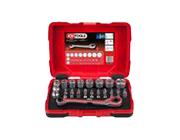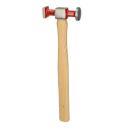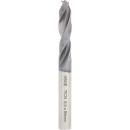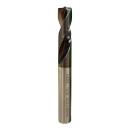Martellerie carrosserie

Bodybuilder's hammer for repair work
-
 140.2135Bodywork hammerround/square head
140.2135Bodywork hammerround/square head -
 332.0308HSSE-TICN twist drill bitØ 8mm - lg 80mm
332.0308HSSE-TICN twist drill bitØ 8mm - lg 80mm -
 332.0310HSSE-TIN twist drill bitØ 10mm - lg 90mm
332.0310HSSE-TIN twist drill bitØ 10mm - lg 90mm
︾
Professional bodywork hammers from KS Tools :
Hammering plays a central role in bodywork, enabling metal surfaces to be shaped, deformed, adjusted and repaired. The main tools used in bodywork hammering include chisels, drill bits and hammers. Here's an overview of these essential instruments:
Chisels :
Function : Bodywork chisels are tools designed to make notches and cuts in sheet metal. They can be used to remove paint or rust, or to create grooves for welding.
Types : There are various types of chisels, including flat, pointed, and bevel chisels. Each type is adapted to specific tasks, offering a variety of options for precision work.
Depointing drills :
Function : Depointing drills, also known as star drills, are used to create weld points. They perforate sheet metal, providing areas of adhesion for welds. This is particularly useful when replacing body panels.
Features : Point drills often have special tips designed to avoid damaging the adjacent surface during drilling.
Bodywork hammers :
Function : Bodywork hammers are versatile tools for shaping and straightening sheet metal. They are used to hammer and shape the contours of body panels, as well as to adjust damaged surfaces during repairs.
Types : There are several types of bodyshop hammers, such as round-ended hammers, square-ended hammers, pointed-ended hammers, and flat-ended hammers. Each type is adapted to specific applications.
Materials : Bodywork hammers can have steel or polyurethane heads. Polyurethane heads are preferred to avoid damaging paint or creating unwanted marks during finishing work.
Tips for use in bodywork :
Choose the right type of chisel for the job. Pointed chisels are ideal for precise cuts, while flat chisels are effective for removing paint.
Use point drills that are suited to the sheet metal material and the specific needs of the weld.
Select the right type of hammer for the shape you want and the material you are working with. Make sure the hammer head is in good condition to avoid damaging the surface.
Mastering bodywork hammering is an essential skill for professionals to ensure meticulous repairs and a quality finish on vehicles.
FAQ about bodywork hammering for your car repairs:
What type of hammer is best suited to straightening dents in body panels?
For straightening dents in body panels, a body hammer with a round tip is often recommended. Its shape allows the force to be distributed evenly over the surface, making it easier to hammer out irregularities without creating new deformations.
How can I avoid damaging the paint when using bodywork hammers?
To prevent damage to paintwork, use bodywork hammers with polyurethane heads. These heads offer a softer surface while maintaining effective striking force. In addition, use protective pads to prevent unwanted marks on the paintwork.
What's the difference between a square-ended hammer and a pointed-ended hammer for bodywork?
Square-ended hammers are generally used to adjust the corners and edges of panels, while pointed-ended hammers are effective for working on more specific areas, such as correcting fine details or accessing restricted areas.
How do I choose the right size of body hammer for a specific job?
The size of the body hammer depends on the type of work to be carried out. For repairs to large surfaces, a larger hammer may be appropriate, while smaller, more precise hammers are preferable for fine adjustments. Choose the hammer according to the target area and the deformation to be corrected.
Can a bodywork hammer be used on aluminium panels?
Yes, but it's vital to use bodywork hammers specifically designed to work with lightweight materials such as aluminium. Polyurethane hammers are often recommended to avoid damaging the delicate surface of aluminium while still allowing precise correction.
How should bodywork hammers be maintained to ensure their durability?
To maintain the durability of your bodywork hammers, keep the heads clean and in good condition. Replace worn heads or handles. Avoid violent impacts that could deform the heads. Proper storage in a dry place also helps to preserve hammer quality.
In conclusion, expert use of bodywork hammers requires an understanding of the types available and their appropriate application. By choosing tools wisely and following good usage practices, professionals can achieve accurate, high-quality bodywork hammering results.